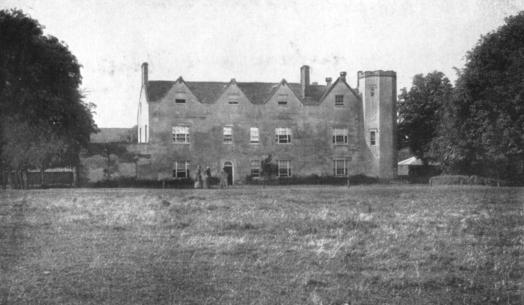Rochford Hall
Rochford
Hall
is
a
manor
house
situated
not
far
from
Rochford
church.
The
exact
date
of
when
the
original
Rochford
Hall
was
built
is
unclear,
but
what
seems
to
be
beyond
doubt
is
that
a
manor
house
of
grand
scale
has
existed
in
the
site
since
the
time
of
the
1086
Doomsday
Book.
It
was
once
one
of
the
largest
houses
in
the
county
and
is
believed
to
have
been
demolished
in
1455,
by
the
then
owner
James
Boteler
(Butler),
5th
Earl
of
Ormonde
and
1st
Earl
of
Wiltshire,
and
reconstruction
completed
around
1480.
In
1485
the
estate
passed
to
Thomas
Boteler,
the
7th
Earl
of
Ormonde
and
a
Member
of
Parliament
in
1495,
under
the
title
of
Thomas Ormonde de Rochford.
Thomas
died
in
1515
and
his
daughter
Margaret,
who
married
Sir
William
Bullen
(Boleyn)
of
Bickling
Hall
in
Norfolk,
became
the
heiress
to
Rochford
Hall.
Although
the
family
home
was
Hever
Castle
in
Kent
they
were
frequent
visitors
to
Rochford
Hall.
Their
eldest
son
Thomas
Boleyn
(father
of
Anne)
inherited
the
title
Viscount
Rochford
and
in
due
course
the
estates
that
went
with
it.
When
Thomas
(Lord
Rochford
and
Earl
of
Wiltshire)
died
in
1539
ownership
of
Rochford
Hall
passed
to
his
eldest
daughter
Mary,
who
was
married
to
Sir
William
Carey
and
with
whom
she
a
son
Henry.
Mary
died
at
Rochford
Hall
in
1543
and
the
Hall,
plus
many
properties
in
the
Rochford
Hundred,
passed
to
her
son
Henry.
Henry
Carey
had
also
inherited
land
in
Hampshire,
Wiltshire
and
Buckinghamshire,
and
it
seemed
he
was
more
interested
in
his
estates
to
the
west
of
London,
than
those
in
Essex,
as
in
around
1552
he
sold
the
Manor
and Rochford estates to Richard Rich.
Sir
Richard
Rich,
or
Lord
Rich
of
Leez
as
he
became
known,
had
acquired
considerable
assets
in
the
county.
He
married
Elizabeth
Jenks
in
1518
and
fathered
a
family
of
15
children
(plus
an
illegitimate
one)!
He
died
at
Rochford
Hall
in
1567
leaving
the
two
principle
Manors
of
Rochford
and
Leighs
(Leez)
to
his
son
Robert.
It
appears
that
Robert
Rich
spent
considerable
time
in
Essex
and
was
probably
responsible
for
much
of
the
addition
to
Rochford
Hall
during
the
late
16th
century
which
turned
the
Hall
into
a
grand
residence. For six generations between 1551 and 1671 Rochford Hall was owned by direct descendants of Richard Rich.
In
1712
Rochford
Hall
was
sold
(for
only
the
second
time
in
its
history)
to
Sir
Richard
Child
of
Wanstead.
He
became
Earl
Tylney
in
1731
and
in
1734
his
two
sons
took
the
name
Tylney
by
Act
of
Parliament.
Earl
Tylney
died
in
1750
and
the
estates
passed
to
his
surviving
son
John,
about
who
little
is
known.
In
around
1760,
(during
the
second
Earl’s
ownership),
there
was
a
great
fire
at
Rochford
Hall
which
destroyed
a
large
part
of
the
building.
There
are
no
remaining
records
of
the
damage
inflicted
but
the
mansion
was
reduced
to
less
than
half
its
size.
This
resulted
in
much
of
the
building
to
the
south
being
pulled
down.
The
north
western
corner
was
roofed
over
as
barns
and
other
parts
left
derelict,
only
to
be
pulled
down
decades
later
when
they
either
became
dangerous
or
builders
needed
the
stones.
When
John
died
the
estate
passed
to
his
sister’s
son
Sir
James
Long
who
then
took
the
name
Tylney-
Long,
followed
by
his
daughter
Catherine
Tylney-Long
and,
via
the
Long-Wellesley
family
to
Henry
Wellesley1st
Earl
Cowley.
Henry’s
ownership
was
short
lived
and
he
quickly
transferred
it
to
his
son
Viscount
Dangan
who
didn’t
have
time
to
manage
the
Rochford
estates
so,
in
1867,
he
put
them
up
for
auction.
A
local
gentleman
farmer,
James
Tabor,
successfully
bid
for
ownership
of
Rochford
Hall
Farm,
complete
with
“ancient
Elizabethan
residence”,
as
well
as
a
number
of
other
agricultural
lots
in
the
area.
James
became
the
42nd
Lord
of
the
Manor
since
the
Doomsday
Book
in
1086.
During
his
tenure
James
Tabor
offered
the
land
adjoining
the
Hall
for
the
creation
of
a
golf
course
together
with
part
use
of
the
building
as
a
clubhouse.
Although
James
died
in
1888
his
grandsons
and
great
grandsons
continued
to
accommodate
the
golf
club
until
1980
when
Robert
Tabor
sold
the
golf
course
and
the
north
east
part
of
the Hall, which they occupied, to Rochford Hundred Golf Club.

Southend Timeline Southend-on-Sea © 2009 - 2024. All Rights Reserved



SOUTHEND CITY

Essex
c1900 Rochford Hall

Southend-on-Sea’s No 1 History Website! Documenting The Town & The Townspeople
Now Incorporating The Sea Of Change Website
Website Info:


Chalkwell ▪ Eastwood ▪ Leigh-on-Sea ▪ Prittlewell ▪ Shoeburyness ▪ Southchurch ▪ Thorpe Bay ▪ Westcliff-on-Sea
































































